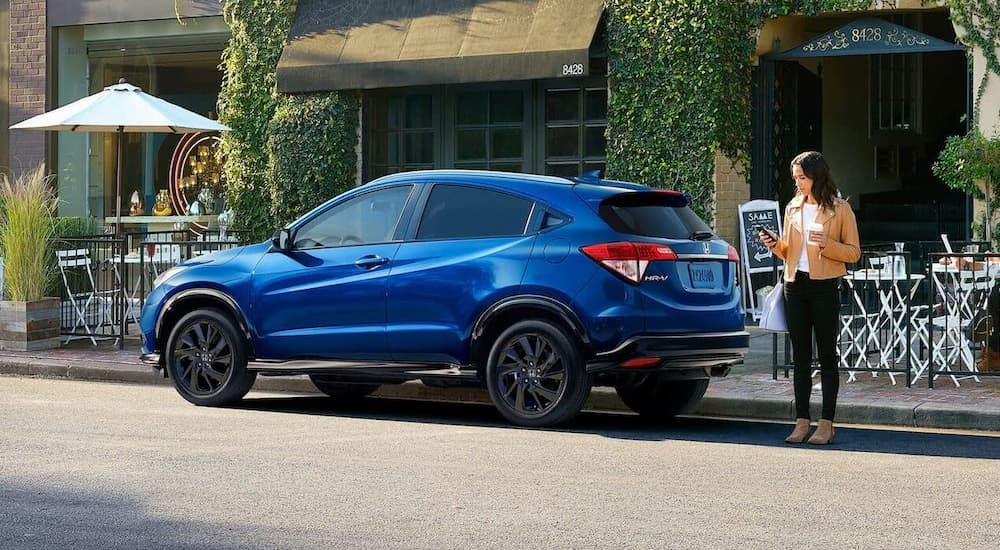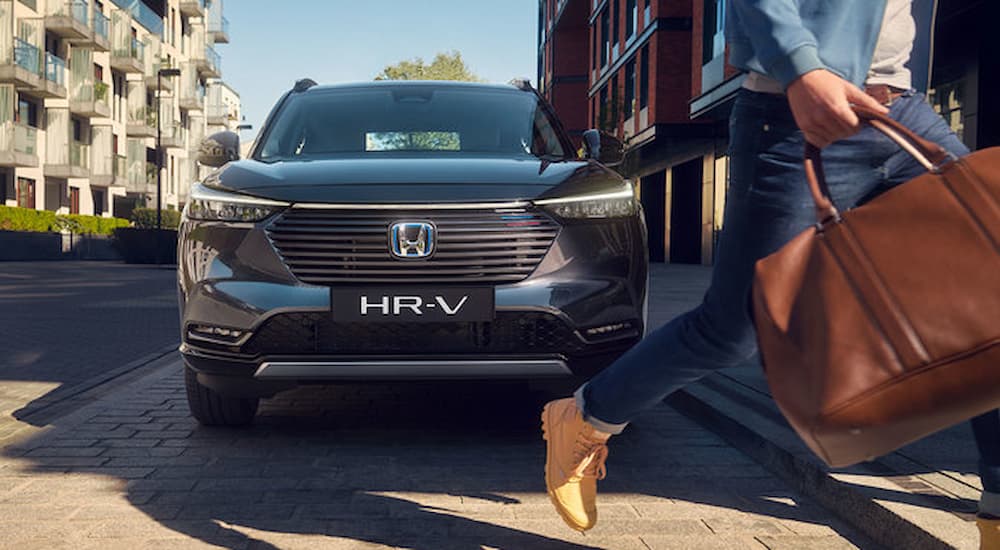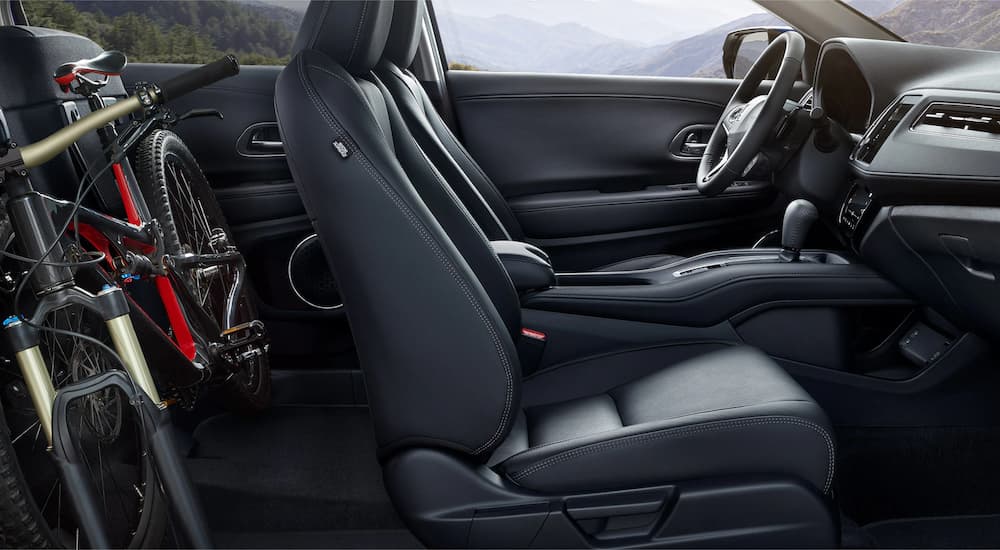In a year where a vehicle doesn’t see design changes, most people are probably not considering what may be going on behind the scenes of an auto manufacturer prior to introducing a new generation or refresh. Most of the automotive junkies in the world get excited about what they can see and interact with, but vehicles are in constant flux with tweaks or design work in between cycles. In the case of the Honda HR-V, this is a year prior to an expected redesign, so the 2022 Honda HR-V doesn’t appear to be exciting… yet.
As the US waits for the generation change for the HR-V, Europe is already enjoying its new design for 2021. That version is a hybrid, and expectations suggest the US will get one, too. Even though the plans are under wraps to avoid spoiling the surprise, Honda has a unique way of developing its products that may give perspective to what’s happening in the company while it creates a new design, how the new European model may indicate what’s coming for the US, and how Honda intelligently targets markets differently than most auto manufacturers in the world.
The European HR-V’s New Look
Honda has a loyal following of people who love the brand, often because of the incredible value of Honda vehicles overall. Whether you love the safety features, the resale value, or the fact that your Honda keeps running year after year, all are valid reasons to love a company that creates products people are happy to own. In the case of the HR-V, a new European model was introduced for 2021, and American auto critics are impressed with its style and interior space in a city-friendly size. Rumors are flying about what to expect for the US model slated to hit the market for 2023, and the current supposition is that the HR-V will have a hybrid powertrain like the European model.
Current 2022 HR-V models in the US are selling with no real changes from last year’s design, but a little comparison between the US and new European models could be revealing. First, the exterior of the European model is a modern shape with more angular lines. Side by side, the US version has an arched roofline and rounded hood, and the European model takes on a minimalist, clean look with a boxy shape. The front fascia for the European version is tidy with its slender line of headlights that meets the top of the less intrusive grille, and there is less to distract the eye. Body sides and the rear fascia minimize the lines and shaping to give the European HR-V straighter edges. In comparison, the US version for 2022 has a lot of swoops and curves both inside and out. However, both versions have hidden handles for the rear doors to maintain cleaner lines.
Going inside the European HR-V reveals a similar minimalistic approach, with straight lines across the dash, vents that integrate with the design so well they disappear, and few distracting elements to interfere with the controls. In the 2022 HR-V from the US, lines are curvy, slanted, and lead into each other from one element to another, taking the eye in a wandering gaze all over the command center and passenger seat view.
Both designs have a connection, maintaining a sense of continuity between the elements like the spacing and shape of the controls, but the older US version does it with a busier look. Honda has already commented on the new design being finalized for the US market and has made no bones about saying it will be different than the European model. It may seem strange to make a different design for the same vehicle, but Honda knows what it’s doing.
Design Process at Honda
Honda has a unique approach to designing its products, and it could explain a lot of its current global success. You may or may not be surprised to learn that 75 percent of the Honda vehicles built in the last 25 years are still on the road. That’s an astonishing success, particularly for vehicles that typically make it to about the ten-year mark on average in today’s market. When Honda employees start a design, they don’t just sit in a room and start sketching; they go out into the world and get ideas, have discussions with animated excitement about what could be possible, and they focus on how the end result will make people happy. It almost sounds like too much fun to be work, but they definitely get that the creative process is about inspiration and emotion, which translates into great design and function.
Once a design is configured, models are sculpted out of clay to allow designers and engineers to see and interact with a life-sized version, allowing them to add or take away from the design easily while it’s being built. This clay model lets the designers add the necessary equipment for safety and regulations while also adjusting the flow of comfort and appearance to make it a cohesive finished product. After the clay model is complete, a mockup is created on computers and sent to the various locations around the world so engineers and designers in all the global markets can give their input about the model, ensuring the end result is flexible for each region where a new product will be sold.
It’s this particular aspect of Honda’s development of products that many automakers may be missing, and why Honda manages to be so successful as a global manufacturer. R&D for Honda is spread all over the globe. They incorporate input from every regional manufacturer, and then each region gets the option of tweaking the original design, so it works for their own particular market. With every region, Honda knows customers may interact with a product differently or may have customs or preferences for how a vehicle looks or feels. This gives regional manufacturers the option to adjust a vehicle design to accommodate preferences, so the end product will be more successful.
After development is finalized, Honda gets to work on testing with mockups, refining the model as the vehicle runs through the gamut of real-life scenarios it will need to survive. Designers continue to have creative process meetings to discuss how to improve or massage the model to have the greatest outcome, meanwhile taking in data from the world market about how people respond to prototypes. Testing takes a long time before arriving at a finished product ready for manufacture, and then the process gets even more interesting.
Global Vision
On its global website, Honda shares that despite producing over 20 million internal combustion engines each year, the company has never experienced a corporate loss. Not ever. In fact, Honda has managed to post gains of approximately five percent yearly, which is uncommon, to say the least. The difference may be in the management style of the company, which doesn’t have a single corporate headquarters for its world operations. Instead, Honda gives autonomy to its regional headquarters so its subsidiaries who know the market where they live can make adjustments to designs, marketing, and manufacturing to suit the people they serve.
As part of this success, Honda incorporates the capability to easily change vehicles being built on a particular manufacturing line, a process Honda calls “synchronized engineering.” Most motor companies have to take months to “retool” a factory to prepare for a new vehicle, but Honda purposefully designs their factories to quickly shift from one vehicle to another in a matter of hours. This makes it simple to deliver more of a particular vehicle that happens to be selling well. The secret is that Honda keeps certain vehicle designs similar enough that changing the line doesn’t require much work, and vehicles with similar designs are grouped into specific manufacturing sites. Thus, local market demands are part of a larger network built of a cohesive whole that can respond to the needs of regions with ease.
This type of organization is what results in one design for Europe and another for the US. While both vehicles may be called the HR-V, there are likely to be differences according to the preferences one culture has over another. Obvious differences like driving on opposite sides of the road affect the design, but cultural differences affect the way people interact with a vehicle. Honda is on track to reveal the 2023 HR-V for the US, a vehicle which we can all be certain will be backed by copious testing and creative development.







